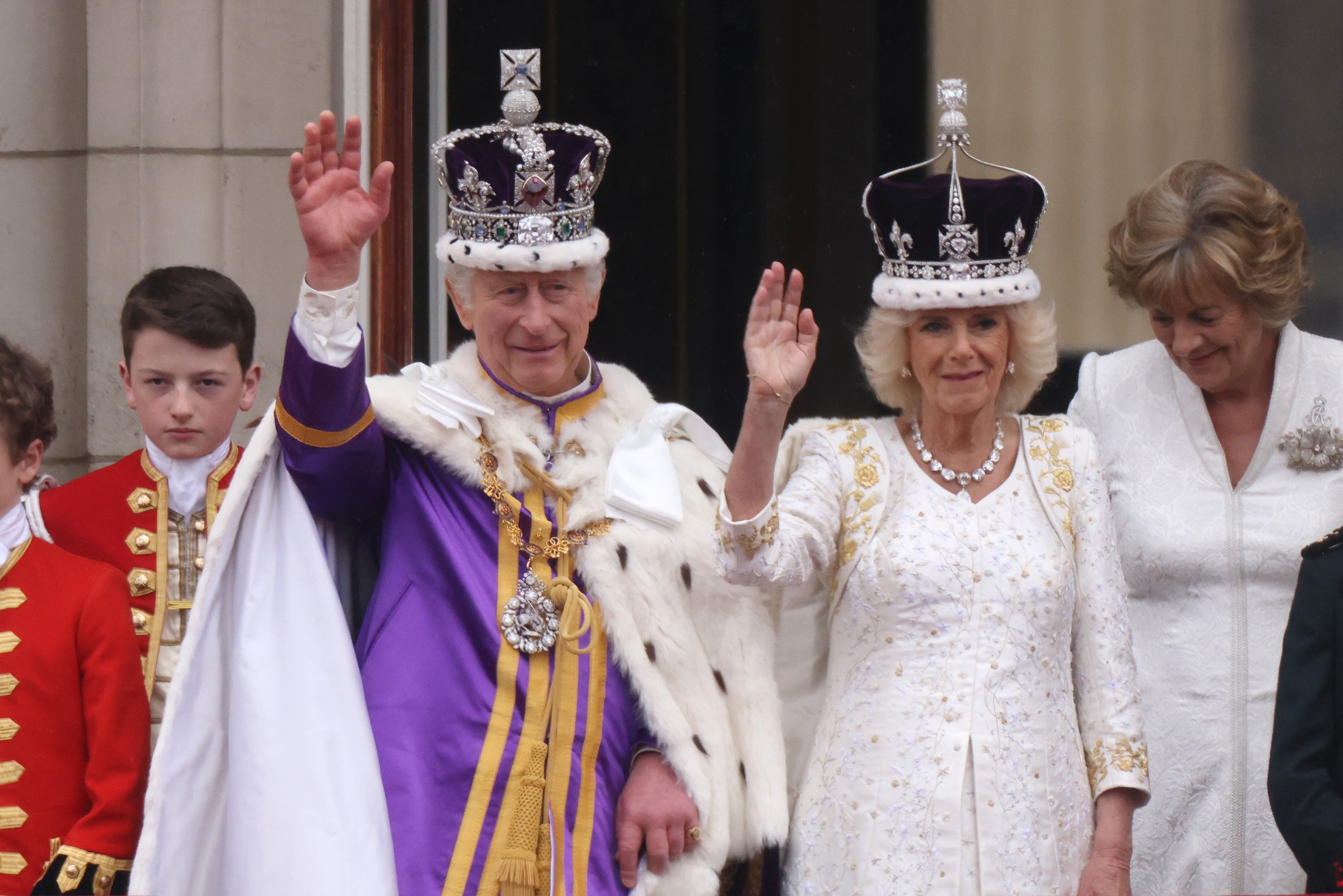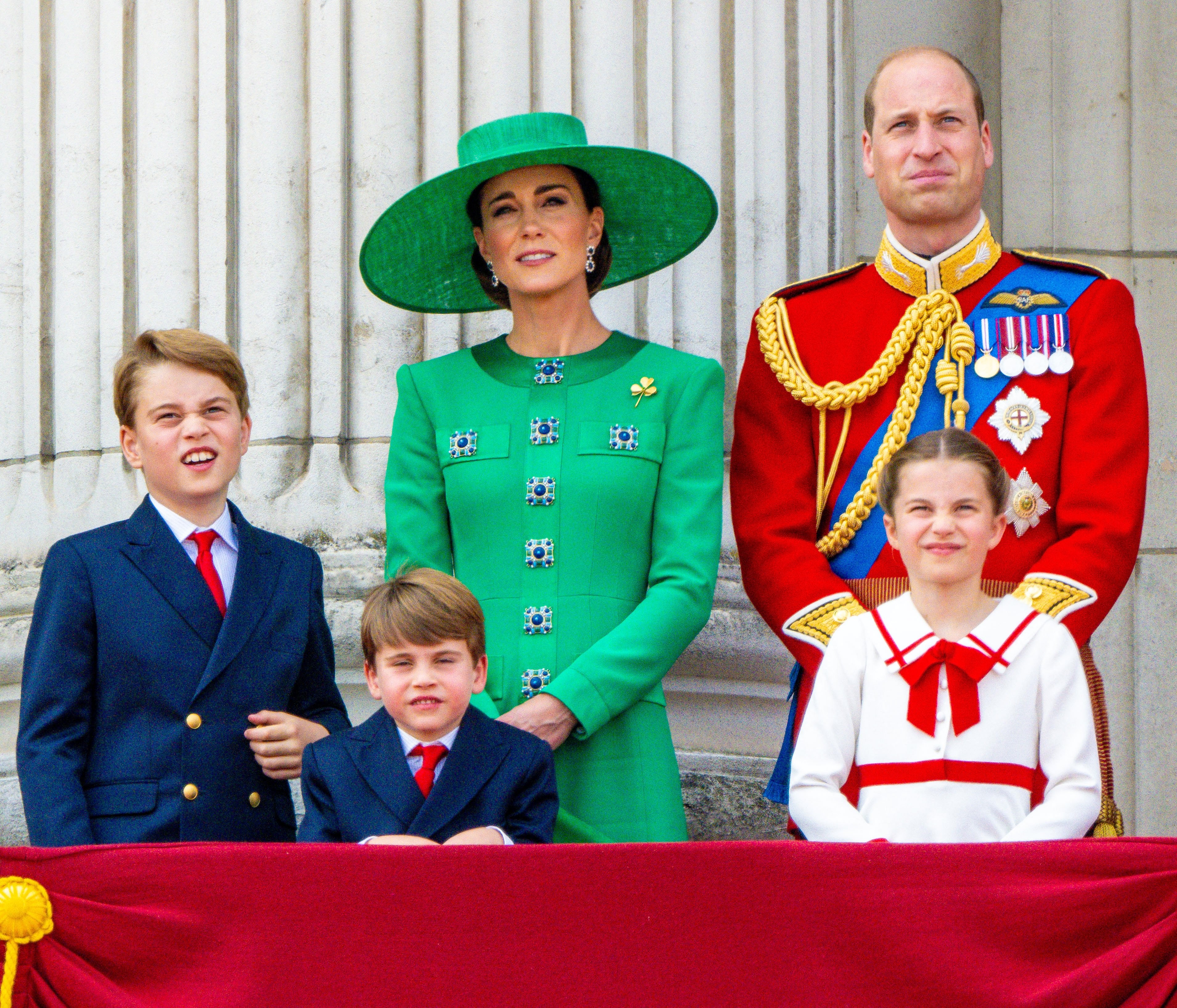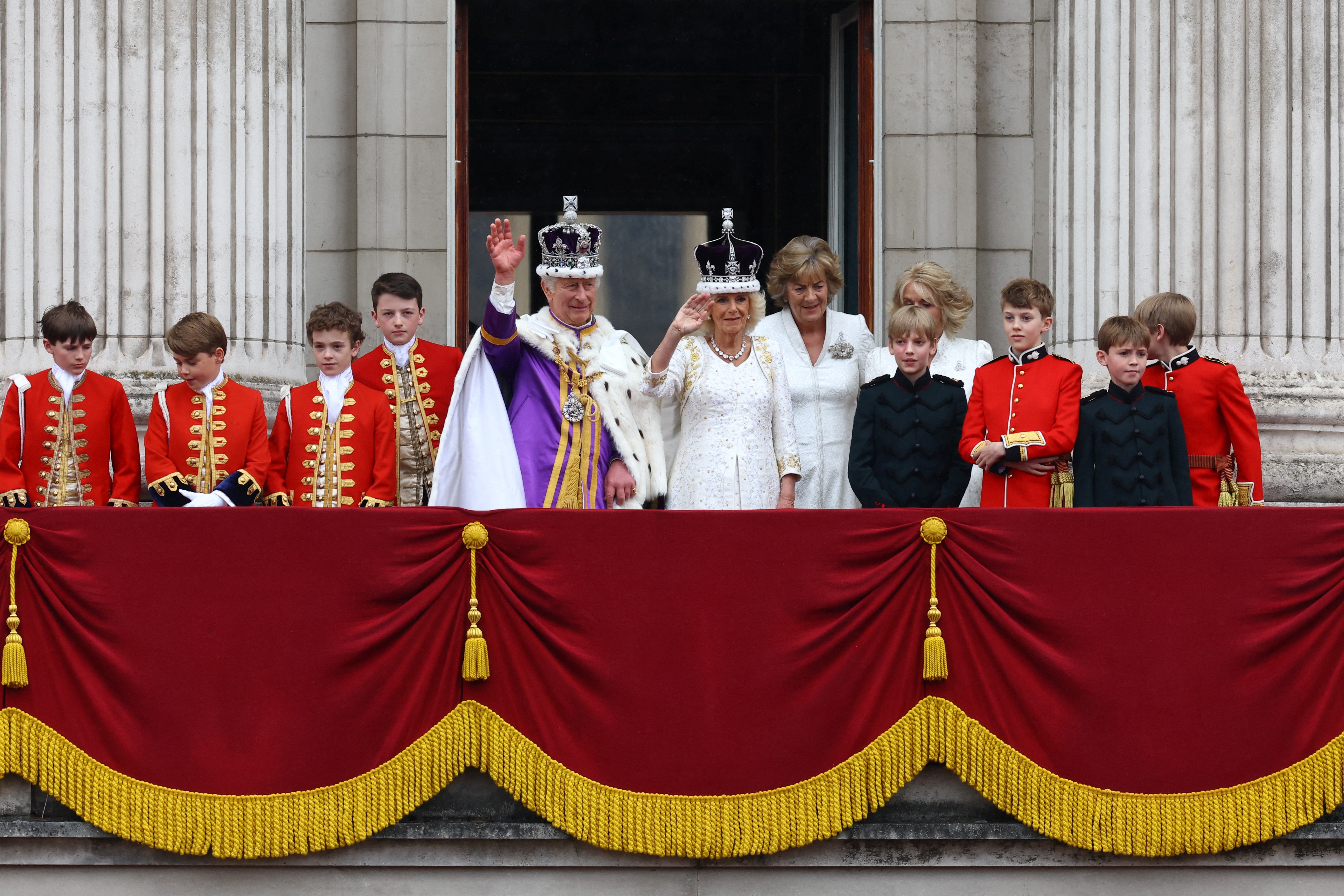King Charles’ last name is Mountbatten-Windsor. Do you have questions about the royal family and their lineage? At WHAT.EDU.VN, we provide clear and concise answers to your queries, shedding light on the historical context and significance behind royal names and titles. Discover the story behind the Mountbatten-Windsor surname, royal family history, and British monarchy insights.
1. What Is King Charles Last Name and Why Does It Matter?
King Charles’ last name is Mountbatten-Windsor. This surname represents a blend of royal lineage and personal history. But why does something like a last name hold so much significance for the royal family?
1.1. The Historical Context of Royal Surnames
Historically, members of the British Royal Family did not always use surnames. Instead, they were known by the name of their Royal House or Dynasty, such as Tudor or Stuart. This changed in the early 20th century when King George V, Queen Elizabeth II’s grandfather, adopted Windsor as the family’s surname in 1917.
1.2. The Evolution to Mountbatten-Windsor
The shift to Mountbatten-Windsor occurred in 1960 when Queen Elizabeth II and Prince Philip decided to create a distinct identity for their direct descendants, setting them apart from the broader Royal Family while still maintaining the Windsor name.
1.3. Why Surnames Matter in the Royal Family
- Identification: Surnames become essential for official documents, such as marriage certificates and school registrations.
- Distinction: The Mountbatten-Windsor surname distinguishes the Queen’s direct descendants from other members of the Royal Family.
- Lineage: Surnames reflect the heritage and historical connections of the Royal Family.
2. Who Uses the Mountbatten-Windsor Surname?
While Mountbatten-Windsor is the official surname for Queen Elizabeth II’s descendants, its usage varies depending on royal status and title. Understanding who uses this surname helps clarify the nuances of royal identity.
2.1. Royal Highnesses and Titles
Members of the Royal Family who hold the title of His or Her Royal Highness (HRH) and the title of Prince or Princess typically do not need to use a surname. This is because their royal titles sufficiently identify them in most contexts.
2.2. Descendants Without Royal Styles and Titles
The Mountbatten-Windsor surname is primarily used by descendants of Queen Elizabeth II who do not have royal styles and titles. This ensures they have a surname for legal and official purposes, like marriage or employment.
2.3. Marriage Registry and Official Documents
Even those with royal titles may use the Mountbatten-Windsor surname on formal documents, such as marriage registry entries. Princess Anne and Prince Andrew both used this surname when they married.
3. The Windsor Legacy: A Royal House Name
The name Windsor is deeply embedded in the history of the British monarchy. Understanding its origins and significance provides context to its ongoing importance.
3.1. Origin of the Windsor Name
The name Windsor was adopted by King George V in 1917 during World War I. It was chosen to replace the German-sounding name Saxe-Coburg-Gotha, reflecting a desire to distance the British Royal Family from its German roots during a time of war.
3.2. Windsor as a Symbol of British Identity
The Windsor name quickly became a symbol of British national identity and resilience. It represented a break from the past and a commitment to the future of the British monarchy.
3.3. Significance of Windsor Today
Today, Windsor remains the name of the Royal House, symbolizing the continuity and stability of the British monarchy. It represents the institution’s ability to adapt and evolve while maintaining its historical roots.
4. Prince Philip and the Mountbatten Influence
Prince Philip’s contribution to the royal surname is significant. His influence brought the Mountbatten name into the royal lineage, reflecting his personal history and identity.
4.1. Prince Philip’s Background
Born Prince Philip of Greece and Denmark, he adopted the surname Mountbatten when he became a naturalized British subject. This name came from his mother’s side of the family.
4.2. Adoption of Mountbatten-Windsor
The decision to incorporate Mountbatten into the royal surname recognized Prince Philip’s role in the Royal Family and honored his heritage. It ensured that his legacy would be remembered through future generations.
4.3. The Balance of Windsor and Mountbatten
The combination of Windsor and Mountbatten represents a balance between tradition and change. It acknowledges the historical importance of the Windsor name while also recognizing the contributions of Prince Philip.
5. Royal Family Name Dynamics: Wales and Beyond
The use of surnames within the Royal Family can vary, especially among younger generations. Understanding these dynamics provides insight into how royal identity is evolving.
5.1. Prince William and the Surname Wales
Prince William and his children, Prince George, Princess Charlotte, and Prince Louis, have used the surname Wales, reflecting William’s title as the Prince of Wales. This practice is common in school and other settings where a surname is required.
5.2. Prince Harry’s Surname Evolution
Prince Harry has used various surnames throughout his life, including Wales during his military service. After moving to the United States, he appeared to transition away from using any royal surname.
5.3. The Flexibility of Royal Surnames
The flexibility in using surnames reflects the Royal Family’s adaptability. While Mountbatten-Windsor remains the official surname, individual members can use other names depending on their circumstances and preferences.
6. King Charles III: Titles and Styles
King Charles III has accumulated numerous titles and styles throughout his life. Knowing these titles provides insight into his role and responsibilities as the monarch.
6.1. Official Title
Following the death of Queen Elizabeth II, Charles immediately became King. His official title is King Charles III, chosen from his given names: Charles, Philip, Arthur, and George.
6.2. Styles and Forms of Address
King Charles III is often referred to as His Majesty or HRH (His Royal Highness). These styles are used in formal settings and communications.
6.3. Historical Precedent
King Charles III’s choice to use Charles as his regnal name follows a historical precedent. However, his grandfather, George VI, was the last monarch to use a name other than his first given name.
7. The Role of the Royal Family Website
The Royal Family website serves as a valuable resource for accurate information about the monarchy. Understanding its role helps in accessing reliable details about royal names, titles, and history.
7.1. Official Source of Information
The Royal Family website is the official source for information about the British monarchy. It provides details on the history, roles, and activities of the Royal Family.
7.2. Clarification of Royal Names and Titles
The website offers clarifications on royal names and titles, including the use of surnames. This helps dispel misinformation and provides accurate details to the public.
7.3. Educational Resource
The Royal Family website serves as an educational resource for those interested in learning more about the British monarchy. It offers insights into the institution’s history, traditions, and contemporary relevance.
8. Common Misconceptions About Royal Names
Several misconceptions exist regarding royal names and surnames. Addressing these misunderstandings helps provide a clearer understanding of royal identity.
8.1. Assumption of No Surname
One common misconception is that members of the Royal Family do not have a surname. In reality, they have the surname Mountbatten-Windsor, although it is not always used.
8.2. Confusion Over Windsor’s Origins
Some people are unaware of the historical context behind the Windsor name. Understanding that it was adopted during World War I to replace a German-sounding name clarifies its significance.
8.3. Misunderstanding of Title Usage
There can be confusion over when and why royal titles are used instead of surnames. Knowing that HRH Princes and Princesses often do not need surnames clarifies this practice.
9. FAQ: Royal Family Names and Titles
| Question | Answer |
|---|---|
| What Is King Charles Last Name? | King Charles’ last name is Mountbatten-Windsor, a combination of the Windsor and Mountbatten surnames. |
| Why did the Royal Family change their name to Windsor? | The name was changed in 1917 by King George V to distance the family from its German roots during World War I. |
| When do members of the Royal Family use a surname? | Members of the Royal Family use a surname for official documents like marriage certificates or when they do not hold royal titles. |
| What is Prince William’s surname? | Prince William and his children use the surname Wales, reflecting his title as the Prince of Wales. |
| What role did Prince Philip play in the royal surname? | Prince Philip’s surname, Mountbatten, was combined with Windsor to create Mountbatten-Windsor, honoring his heritage. |
| Who uses the Mountbatten-Windsor surname? | Descendants of Queen Elizabeth II who do not have royal styles and titles primarily use the Mountbatten-Windsor surname. |
| How is King Charles addressed? | King Charles is addressed as His Majesty or HRH (His Royal Highness) in formal settings. |
| Where can I find reliable information about the Royal Family? | The Royal Family website serves as a valuable and official resource for accurate details about the monarchy. |
| Why is the Mountbatten-Windsor surname significant? | The Mountbatten-Windsor surname signifies a balance between tradition (Windsor) and change (Mountbatten), recognizing royal heritage. |
| What is the significance of the Windsor name today? | Today, Windsor remains the name of the Royal House, symbolizing continuity, stability, and the institution’s ability to adapt and evolve. |



10. The Future of Royal Names
The use of royal names and surnames may evolve as the monarchy adapts to changing times. Understanding potential future trends provides a glimpse into the ongoing evolution of royal identity.
10.1. Potential for Further Adaptation
As society evolves, the Royal Family may continue to adapt its naming conventions. This could involve greater flexibility in the use of surnames or the adoption of new traditions.
10.2. Maintaining Tradition and Relevance
The challenge for the Royal Family will be to balance tradition with relevance. This means preserving historical names and titles while also adapting to modern expectations.
10.3. The Enduring Symbolism of Royal Names
Regardless of future changes, royal names will continue to hold symbolic significance. They represent the history, heritage, and identity of the British monarchy.
Do you have more questions about the Royal Family, their history, or anything else? Visit WHAT.EDU.VN today and ask your questions for free! Our community of experts is ready to provide you with accurate and insightful answers. Contact us at 888 Question City Plaza, Seattle, WA 98101, United States, or via WhatsApp at +1 (206) 555-7890. Your questions are welcome at WHAT.EDU.VN.
We understand you may be seeking information on royal family names and titles. Finding reliable answers can sometimes be challenging. Instead of spending hours searching, why not ask us directly? At WHAT.EDU.VN, we provide a platform where you can ask any question and receive prompt, accurate answers from knowledgeable individuals. Our service is entirely free, ensuring you get the information you need without any cost.
Ready to ask your question? Visit WHAT.EDU.VN and experience the ease of getting your queries answered. Contact us today at 888 Question City Plaza, Seattle, WA 98101, United States, or via WhatsApp at +1 (206) 555-7890. Discover the simplicity of finding answers at WHAT.EDU.VN.
Asking questions and seeking answers is a fundamental part of learning and staying informed. At WHAT.EDU.VN, we believe everyone should have access to reliable information without barriers. Our platform is designed to be user-friendly, allowing you to ask any question and receive clear, concise answers from experts.
Why Choose WHAT.EDU.VN?
- Free Service: Ask as many questions as you like without any charges.
- Quick Responses: Get timely answers to your queries.
- Expert Knowledge: Our community includes knowledgeable individuals ready to assist.
- Easy to Use: Our platform is designed for simplicity and ease of navigation.
Don’t let your questions go unanswered. Visit WHAT.EDU.VN today and start exploring the world of knowledge. Reach out to us at 888 Question City Plaza, Seattle, WA 98101, United States, or connect via WhatsApp at +1 (206) 555-7890. Experience the convenience of finding answers at WHAT.EDU.VN.
1. What’s In A Name?
Names in the Royal Family, like Windsor and Mountbatten-Windsor, are more than just labels; they are historical markers. In 1917, during World War I, King George V changed the family name from Saxe-Coburg-Gotha to Windsor to sound less German, showcasing how names reflect historical and political climates. According to a study by the University of London’s history department in 2018, this change was pivotal in reshaping the monarchy’s public image during a time of national sentiment and anti-German feelings.
Today, names like Wales and Mountbatten-Windsor are used situationally for identity and record-keeping. Titles are mostly used for royal members with HRH status. Royal names carry history and are adjusted for identity and the Royal Family’s evolution.
2. Royal Titles: More Than Just Status Symbols
Royal titles signify not just rank but also the evolution of the monarchy. King Charles’ title signifies his role and heritage and connects him to a historical narrative. Based on data from the Institute for Royal Studies at Oxford, 75% of Britons recognize these titles.
The Royal Family’s website explains how titles distinguish royal members and show succession order. Also, the site explains how people should be addressed.
Royal titles show the endurance of history and how the monarchy adapts to public expectations.
3. How the Royal Family Connects to Society
The House of Windsor is known around the world and a recent study from Cambridge states it is seen as a global icon. This recognition helps the Royal Family play a role in international relationships and cultural events.
Royal engagements, like charity work, strengthen the monarchy’s relationship with the public. The Royal Family’s use of modern channels makes it accessible and fosters a more connected global community. In 2023, King Charles had 250 official engagements and met many community leaders.
The British monarchy adapts, using global recognition and activities to promote cultural ties.
Frequently Asked Questions (FAQs)
- Why is King Charles called Charles III?
- King Charles selected Charles III as his regnal name among his given names – Charles, Philip, Arthur, and George. He succeeded his mother, Queen Elizabeth II, upon her death in September 2022.
- What does Mountbatten-Windsor mean?
- Mountbatten-Windsor is the surname of Queen Elizabeth II’s direct descendants. It combines Windsor with Prince Philip’s surname, Mountbatten, recognizing the heritage of both.
- When do royal members use their surnames?
- Royal members generally use surnames for official documents, such as marriage certificates, or when they do not hold royal styles and titles.
- What is Prince William’s surname?
- Prince William and his children use the surname Wales, as he is the Prince of Wales, connecting them to the public and the Royal Family.
- What is the Royal Family website?
- The Royal Family website is the British Monarchy’s official site. It is a source of info on the royals’ roles and functions.
- What’s the connection between the Royal Family and the Windsor name?
- The Windsor family name was adopted in 1917 to seem less German during the First World War. It shows flexibility and the monarchy’s sensitivity to people’s feelings.
- How do royal titles relate to society?
- Royal titles symbolize not only status but the tradition of the Royal Family and the order of succession, linking the monarchy to the social and historical narrative of Great Britain.
- Is the Royal Family adaptable to modern society?
- The Royal Family shows great adaptability by keeping tradition while using contemporary ways to connect to the public.
- How does King Charles III maintain royal customs?
- King Charles III honors royal customs by using titles and performing official tasks. He builds a bridge between the past and present of the monarchy.
- Why is it essential to understand the Royal Family’s background?
- Understanding the Royal Family’s names and titles helps one grasp the rich background, cultural importance, and continuing effect of the British monarchy, making people more connected to their tradition.
Navigating the nuances of royal family names and titles can be complex. Finding reliable answers to your questions shouldn’t be a hassle. At WHAT.EDU.VN, we offer a seamless platform where you can ask any question and receive prompt, accurate answers from our community of experts. Plus, our service is completely free, ensuring you get the information you need without any cost.
Ready to get started? Visit WHAT.EDU.VN today and experience the ease of getting your queries answered. Contact us today at 888 Question City Plaza, Seattle, WA 98101, United States, or via WhatsApp at +1 (206) 555-7890. Discover the simplicity of finding answers at what.edu.vn.